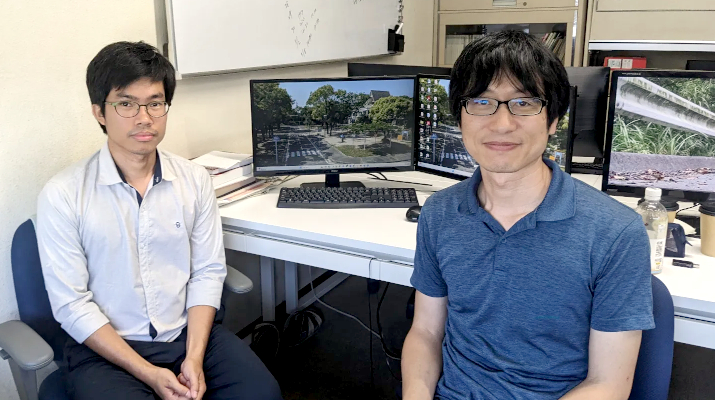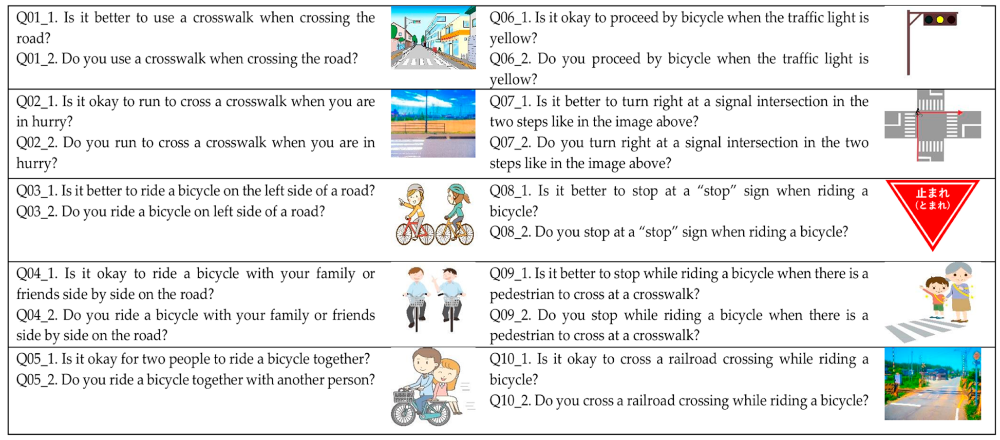

Contribution of traffic park to children traffic safety education
Mital Chakma
A study led by PhD candidate Mital Chakma and associate professor Kojiro Matsuo from the Department of Architecture and Civil Engineering at Toyohashi University of Technology has highlighted the contribution of “Traffic Park (TP)” to local children’s traffic safety education. Using Toyohashi TP as a case study, the research evaluates how frequent TP usage improves children's traffic rule awareness and behavioral intentions, ultimately helping children to be safer on the roads.

In Japanese culture, elementary school children walk to and from school independently (without adults) by forming a small group called a “shuudantogeko” in Japanese, known as the “walking school bus (WSB)” in English. This active commuting is essential for children’s health and social development. To ensure the continuity of this tradition, it is crucial to improve children's road safety through basic traffic awareness education that equips them with the necessary skills for safe interactions with traffic and pedestrians. Previous research indicates that children’s traffic accidents are often caused by factors such as insufficient traffic awareness, inadequate behavioral skills, limited cognitive and perceptual abilities, and a lack of experience in walking independently.
To address this issue, the research team investigated the contribution of Traffic Parks (TPs) to children’s traffic safety education by analyzing how children's knowledge of traffic rules and behavioral intentions are influenced by their experiences of using and playing at a TP before and after entering school.
Lead researcher Mital Chakma stated, "We analyzed response data from more than 800 children, collected through a questionnaire survey conducted in four elementary schools in Toyohashi City. The survey assessed children's awareness and behavioral intentions regarding ten traffic rules, along with the frequency of their TP usage. We applied structural equation modeling (SEM) to understand the complex relationship between children's frequency of TP use, their traffic rule awareness, and behavioral intentions. The results revealed that children's frequent use of TPs before entering school significantly improves their awareness of traffic rules and their behavioral intentions, contributing to safer road use."

Chakma also added, “TPs are engaging places for children where they can play, ride bicycles, interact with other children, and learn traffic rules in a play-based manner. These research findings have practical implications for developing foundational traffic safety awareness and behavior among children, particularly during the critical transition to elementary school.”
This research identified Traffic Parks as an effective play-based method for teaching traffic rules to children. However, this research is limited to the targeted TP only. The research team would like to explore other TPs in Japan and globally, as guidelines and policies may differ across regions.
Reference
Chakma, M., Matsuo, K., & Sugiki, N. (2025). Impact of Traffic Park Use on Children’s Traffic Rule Awareness and Behavioral Intentions: Case Study in Toyohashi City. Sustainability, 17(3), 937. https://doi.org/10.3390/su17030937.
子どもたちの交通安全教育への交通公園の貢献
ミタル チャクマ豊橋技術科学大学建築・都市システム学専攻の博士後期課程ミタル チャクマ氏と松尾幸二郎准教授らによる研究では、「交通公園」が子供たちへの交通安全教育に貢献していることを明らかにしました。豊橋における交通公園をケーススタディとして、交通公園を頻繁に利用することで、子供たちの交通ルールに対する認識や行動意識がどのように向上し、どのように安全な移動習慣が育まれるかを考察しました。
日本では文化的に、多くの小学生が、日本語では「集団登下校」、英語では「ウォーキング・スクールバス(WSB)」と呼ばれる小集団を形成し、独立して(大人を伴わずに)徒歩で登下校しています。このような通学は、子供たちの健康と社会性発達に重要な役割を果たしています。この伝統を継続させるためには、歩行者として、自動車などの他の交通と安全に接するために必要なスキルを身につけさせる基本的な交通安全教育を通じて、子供たちの移動の安全性を向上させることが極めて重要です。これまでの研究によると、子供の交通事故は、不十分な交通知識、不十分な行動技能、限られた認知・知覚能力、大人から独立した徒歩移動の経験不足などが原因で、意図せずに発生することが多いといわれています。
そこで本研究チームは、子供たちが入学前後に交通公園を利用したり遊んだりした経験が、交通ルールの知識や行動意識にどのような影響を与えるかを分析することで、交通公園が子供たちの交通安全教育にどのように貢献しているかを調査しました。
本研究の主な実施者であるミタル チャクマ氏は、「豊橋市内の4つの小学校で実施したアンケート調査を通じて収集した800人以上の児童の回答データを分析しました。この分析では、10項目の交通ルールに関する子どもたちの意識と行動意識、そして交通公園の使用頻度を評価しました。構造方程式モデル(SEM)を適用し、子どもたちの交通公園利用経験や頻度、交通ルールに関する認識および行動意識の複雑な関係を評価しました。その結果、子どもたちが小学校入学より前(幼児期)に頻繁に交通公園を利用することで、交通ルールに対する認識と行動意識が統計的有意に向上し、より安全な移動に貢献することが明らかになりました」と述べています。
ミタル チャクマ氏は、「交通公園は子供たちにとって、遊びながら自転車に乗ったり、他の子供たちと交流したり、遊びをベースに交通ルールを学んだりできる魅力的な場所です。これらの研究結果は、特に小学校への重要な移行期にある子供たちに、基礎的な交通安全意識を身につけさせる上で、実用的な意味を持つものである。」とも述べています。
本研究により、交通公園の活用は遊びをベースにしながら子供たちに交通ルールを教えるのに効果的な方法であることが明らかになりました。しかし、本研究は対象となる豊橋の交通公園だけに限定されています。交通公園における管理や活用の方針は地域によって異なる可能性があるため、本研究チームは日本や世界の他の交通公園についても調査を続けています。
Researcher Profile

| Name | Mital Chakma |
|---|---|
| Affiliation | Department of Architecture and Civil Engineering |
| Title | Doctoral Student |
| Fields of Research | Traffic safety for vulnerable road user |
